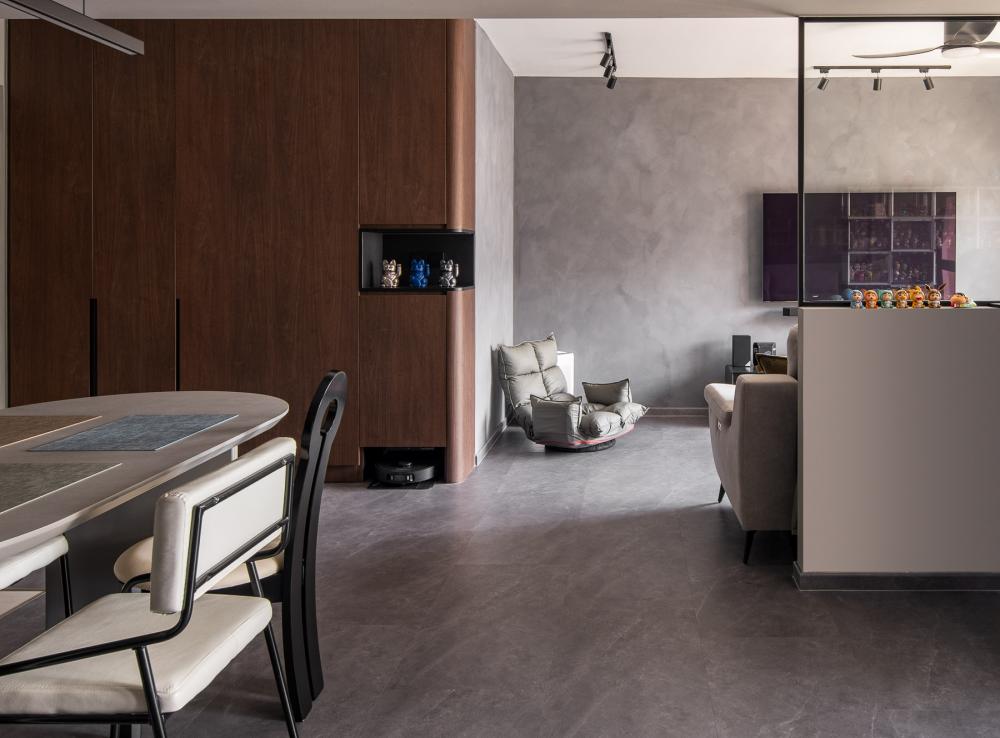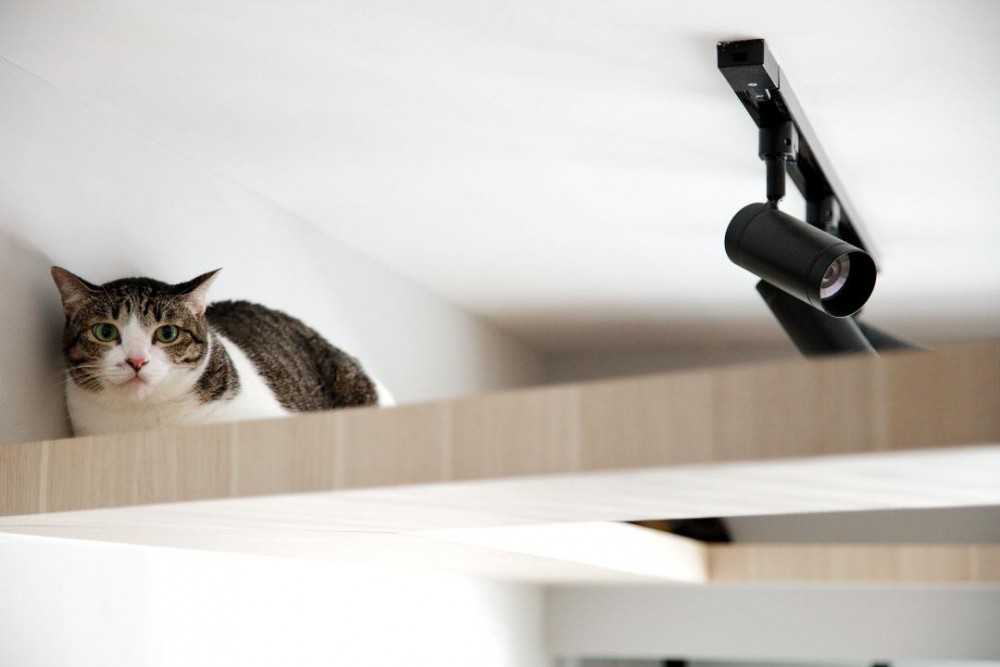The Ultimate Guide to Renovating In the Industrial Style
Industrial-style interiors have surged in popularity for their raw, functional, and minimalist aesthetic. Rooted in the practicality of converted warehouses and factories, this style embraces exposed materials, earthy tones, and open layouts.
In Singapore, where urban living dominates, the industrial style fits seamlessly into HDB flats and condominiums, providing a chic, modern aesthetic that feels fresh yet timeless.
In this ultimate guide, we’ll walk you through how to achieve an industrial-style home.
Understanding the Industrial Style
The industrial style is a bold design trend that emerged from the practical needs of early 20th-century factories and warehouses. Back then, aesthetics took a back seat to functionality, resulting in spaces that exposed the raw beauty of materials like concrete, steel, and brick.
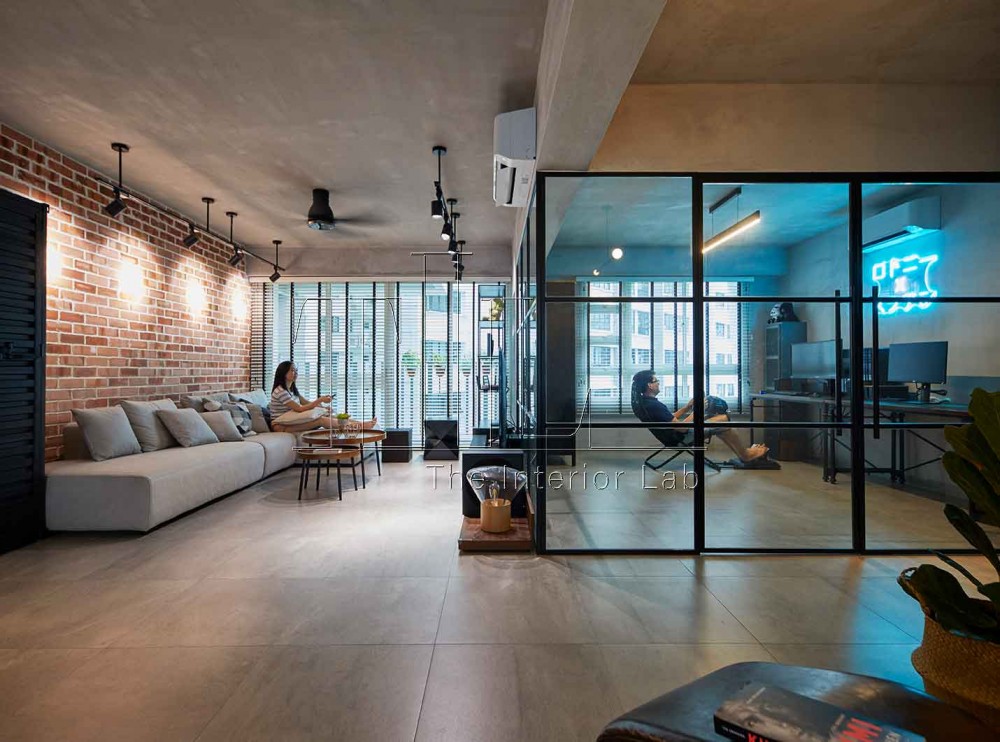

Punggol Sapphire ($95,000) by Starry Homestead Pte Ltd
Over time, this utilitarian aesthetic has evolved into a sought-after interior design style, offering a perfect balance of ruggedness and sophistication.
At its core, industrial design strips away unnecessary frills to showcase the honesty of materials and structures. The defining features of this style include:
- Exposed elements: Unlike traditional interiors that conceal ductwork, beams, or pipes, industrial spaces highlight these structural elements as part of the design. Think of exposed conduits running along the ceiling or bare brick walls adding texture to a room.
- Raw materials: Concrete floors, steel furniture, and reclaimed wood dominate industrial interiors, offering a tactile, earthy vibe that’s both modern and timeless.
- Neutral color palettes: Shades of grey, black, and white are the foundation of this style. Splashes of color are added sparingly, often through accessories or art pieces.
- Functional design: Open layouts and multi-purpose furniture are key to the industrial aesthetic, reflecting its origins in practical, utilitarian spaces.
In Singapore, the appeal of industrial design lies in its adaptability to urban living. Compact HDB flats and condominiums may not resemble sprawling warehouses, but the industrial style can be tailored to suit these spaces. By blending raw elements with modern sensibilities, homeowners can create a chic, comfortable environment that reflects their personality.
Is the Industrial Style Right for You?
While the industrial style has undeniable charm, it isn’t a one-size-fits-all approach to home design. Before committing to this bold aesthetic, it’s important to consider your lifestyle and the needs of everyone living in your home. Here are some considerations to keep in mind:
If you have young children or plan to have kids
The industrial style often incorporates materials like concrete and metal, which can have sharp edges, hard surfaces, and a cold touch. If you’re planning to have kids or already have little ones, you may find these elements less child-friendly. Features like exposed wiring or rugged finishes might require extra precautions to ensure safety.
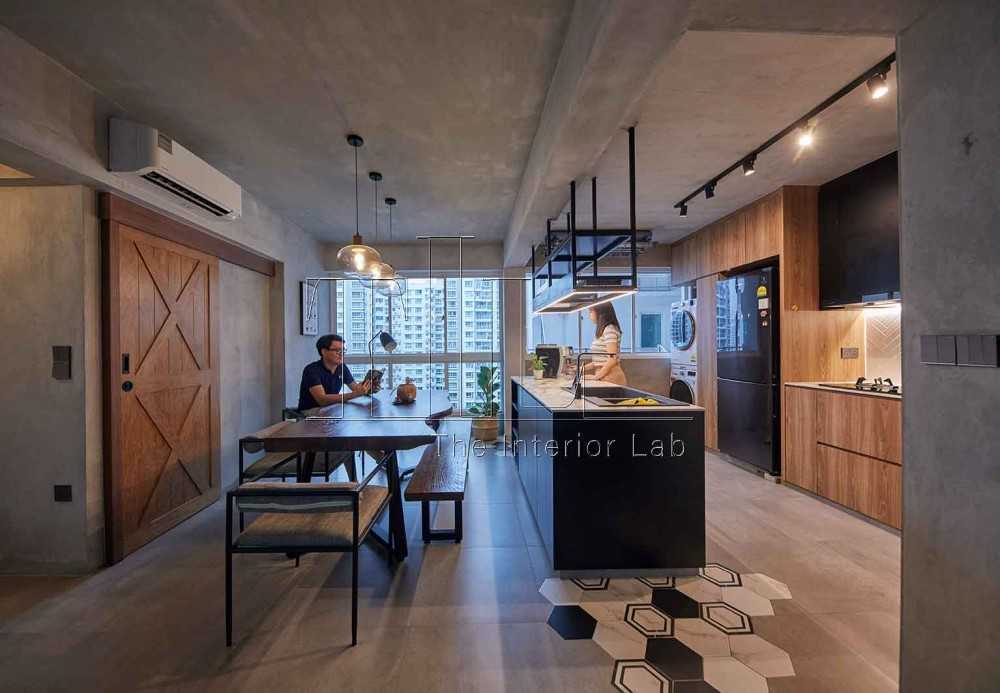

Punggol Sapphire ($88,000) by Starry Homestead Pte Ltd
If you’re living with elderly parents
Older adults often prioritize comfort, warmth, and ease of navigation in their living spaces. The industrial style, with its emphasis on minimalism and raw materials, may not offer the cushioned seating or homely atmosphere that some older family members prefer. Additionally, hard concrete floors might not be ideal for those who are prone to falls or have joint issues.
If you like a warm, cozy atmosphere
The industrial aesthetic leans heavily on neutral, cool tones like grey, black, and white, which might not appeal to those who love vibrant colors or cozy textures. If your idea of home involves plush rugs, warm lighting, and soft furnishings, the industrial style might feel too stark or impersonal.
If you’re looking for a low-maintenance home
Industrial interiors often feature raw, unfinished surfaces that can require regular maintenance. For instance, concrete floors may need sealing to prevent stains, and exposed pipes or brickwork can accumulate dust. If you prefer a low-maintenance home, this style might not align with your priorities.
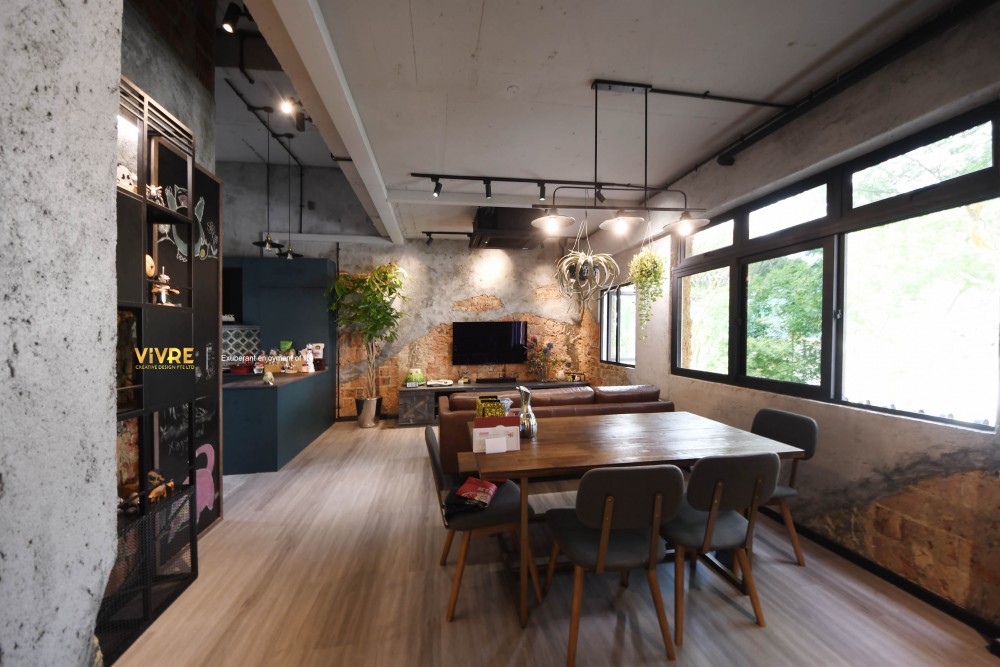


Punggol Sapphire ($92,000) by Starry Homestead Pte Ltd
If you value peace and quiet
Open layouts and bare surfaces, which are common in industrial homes, can amplify noise. If you work from home and need a quiet environment for focus, this might be a significant drawback, especially in compact HDB flats or condominiums where sound travels easily.
Ultimately, the industrial style is ideal for those who appreciate its bold, edgy aesthetic and are willing to adapt their space to suit its unique features. However, it’s worth reflecting on your lifestyle, family dynamics, and personal preferences to determine if this trend is truly the right fit for you. Remember, your home should be a reflection of your needs and comfort, not just a design statement.
Planning Your Industrial-Style Renovation
Embarking on an industrial-style renovation requires thoughtful planning to balance the aesthetic appeal with practicality, especially within the context of Singaporean homes. Here are key considerations to keep in mind as you plan:
Set a Realistic Budget
Industrial-style renovations can vary greatly in cost depending on the materials and finishes you choose. Exposed brick, polished concrete, and steel accents can be pricier than conventional alternatives, especially if they need to be custom-made or imported. Establish a budget that accounts for these unique elements and prioritize where to splurge or save.



Kew Residences ($80,000) by Starry Homestead Pte Ltd
Understand Your Space Constraints
Most HDB flats and condominiums in Singapore have compact layouts, which means careful planning is needed to incorporate industrial elements without making the space feel cramped. For instance, using large glass panels framed with black metal can help create an open, industrial feel while dividing spaces effectively.
Balance Form with Function
Industrial style often prioritizes aesthetics, but it’s essential to ensure that your home remains functional. For instance, while open shelving made of reclaimed wood adds charm, consider whether it provides sufficient storage or if enclosed cabinetry might better meet your needs. You can also choose to go with a mix of both for a win-win.
Work with an Experienced Designer or Contractor
The industrial style involves complex elements like exposed piping, raw textures, and specific lighting setups. Hiring professionals familiar with this design trend ensures the aesthetic is achieved without compromising on quality or safety. Be sure to review portfolios and select someone experienced with industrial-style projects in Singapore.
Obtain the Necessary Permits
Hacking walls, exposing pipes, or installing unique finishes in HDB flats often requires approval from HDB. Ensure that your contractor secures the necessary permits and follows regulations to avoid complications later.
Consider the Practicalities of Industrial Elements
When incorporating industrial elements into your home, it’s essential to consider their practical implications.
While exposed pipes and ducts are a hallmark of industrial design, they require careful planning to avoid hindering ceiling heights or creating maintenance challenges. In compact spaces like HDB flats, these features need to be thoughtfully positioned so they don’t disrupt the flow or functionality of your home.
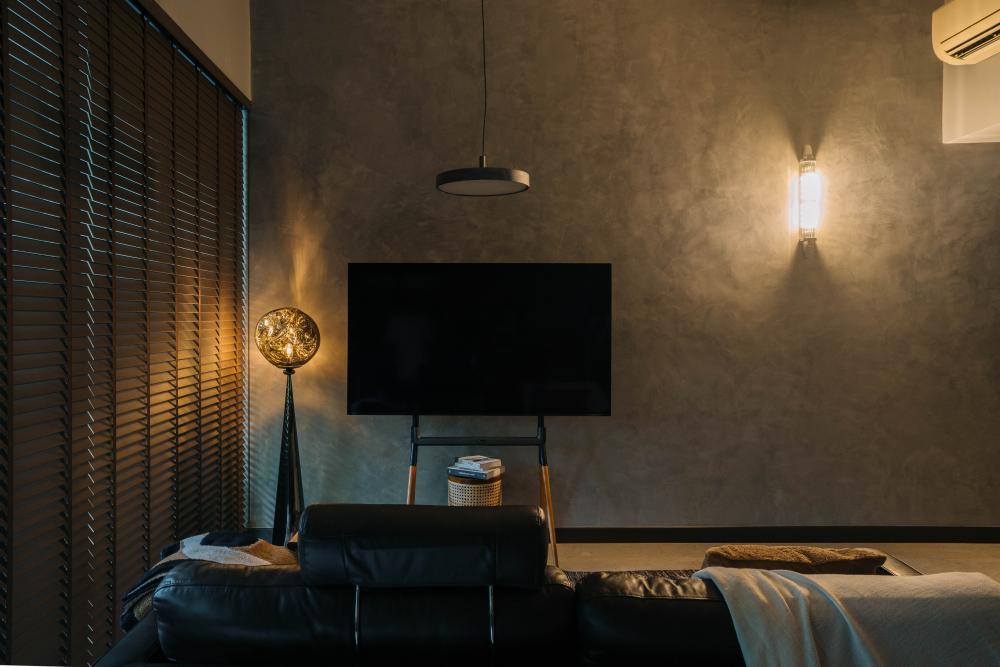

503 Bedok Reservoir ($85,000) by Starry Homestead Pte Ltd
Concrete floors are another popular choice for industrial-style homes due to their minimalist aesthetic and durability. However, they come with trade-offs. Concrete can feel cold underfoot, which may be uncomfortable for young children or elderly family members. To offset this, consider layering rugs or adding soft furnishings to balance the ruggedness of the material with a touch of warmth and comfort.
Lighting is a critical component of the industrial style, with pendant lights, Edison bulbs, and metal fixtures often taking centrestage. While these designs add character and ambiance, they might not always provide sufficient illumination in functional areas like kitchens or workspaces.
It’s crucial to layer your lighting – combining statement pieces with brighter task lights or under-cabinet lighting to ensure your home remains both stylish and practical. By paying attention to these details, you can create an industrial look that’s as functional as it is visually striking.
We’ll discuss each of these considerations in greater detail in the sections below.
Choosing Your Materials and Finishes
When planning an industrial-style renovation, the materials and finishes you choose play a crucial role in defining the aesthetic and overall vibe of your space.
The industrial style thrives on raw, unfinished, or repurposed materials that give the space a sense of authenticity and history. However, it’s important to select materials that not only fit the design but are also suitable for the unique conditions in Singapore, such as humidity and the wear and tear that comes with high foot traffic.
Brick, Concrete, and Steel
One of the most iconic materials in the industrial style is exposed brick. Its rugged texture and warm tones immediately evoke a sense of urban sophistication.
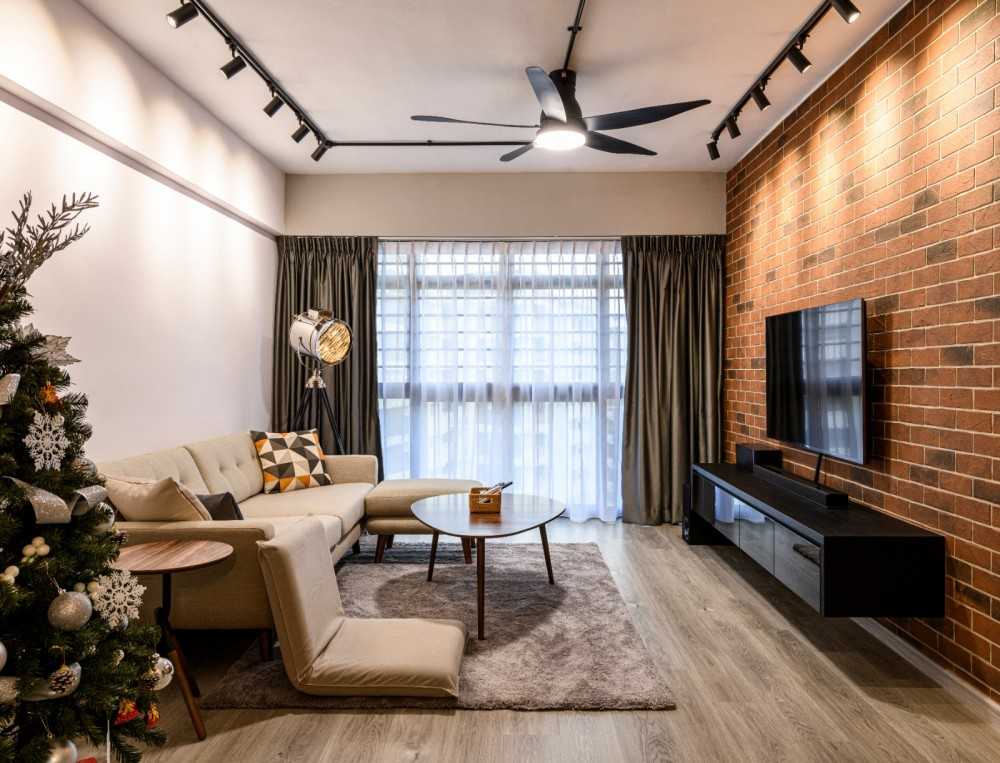

525 Woodland ($78,000) by Ideology Interior
Steel and metal accents also make an appearance in industrial design. Metal beams, steel-framed windows, and wrought iron furniture lend a sleek, utilitarian look. However, it’s important to balance these hard materials with softer elements to prevent the space from feeling too harsh or sterile. For example, pair a steel-framed dining table with plush leather chairs or add textiles like linen curtains to soften the space.
Wood
Though the industrial style leans heavily on raw and exposed materials, wood also plays a vital role in balancing the coolness of steel and concrete. Reclaimed wood is particularly favored for its history and character, often used for furniture, flooring, or accent walls.
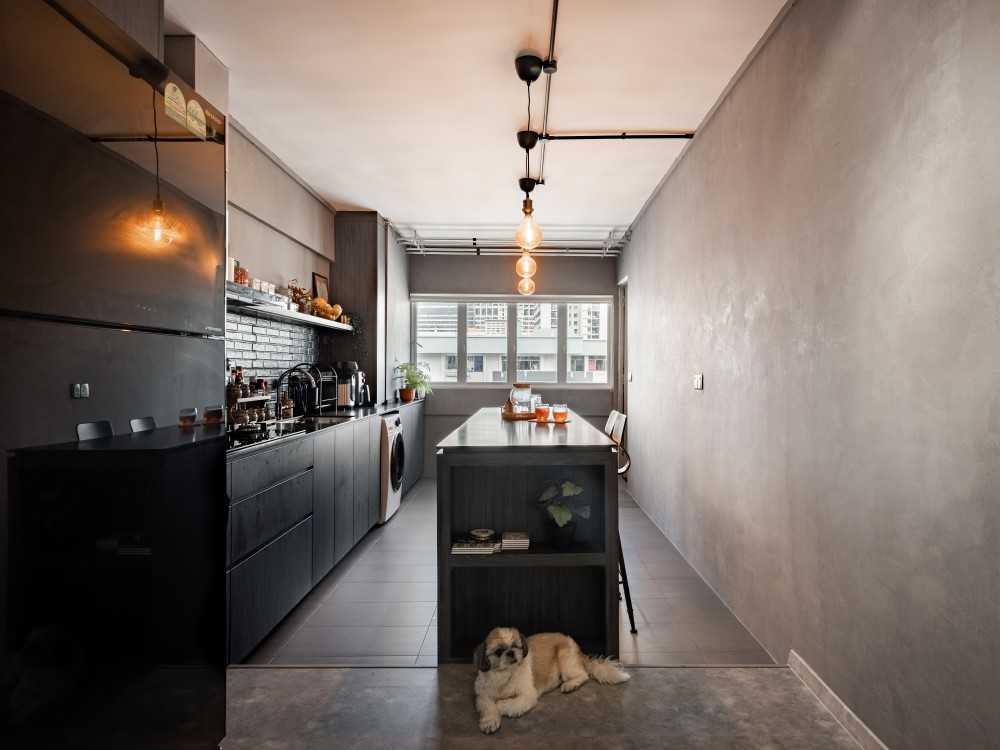

Cambridge Road ($95,000) by U-Home Interior Design Pte Ltd
For those who don’t know, there are many furniture stores in Singapore that specialize in customizing furniture using wood sourced from sustainable forests around the world. At showrooms like those at Tan Boon Liat Building, you’ll find a variety of wood slabs on display. You can select the slab that you like best, and create unique pieces of furniture that align with the industrial aesthetic.
When choosing wood, always consider the different types of wood and their properties. In Singapore’s humid climate, choose wood varieties that can withstand moisture, such as teak, or treat the wood with a protective finish to ensure longevity. Avoid untreated softwoods like pine, as they may warp or discolor due to the moisture in the air.
Glass
While industrial homes tend to embrace raw, sturdy materials, glass is often used to add a touch of lightness and transparency. Glass windows, sliding doors, or even glass partitions in the living or dining area can allow for a sense of openness and flow, especially in smaller spaces where you want to avoid making the space feel too confined.
Steel-framed glass windows, with their minimalist and geometric design, are quintessentially industrial, letting natural light pour into the space while maintaining the hard, structural feel of the design.
Finishes
The finish you choose for your materials will significantly impact the overall vibe of your industrial-style home. Matte finishes on concrete or metal can enhance the raw and unfinished feel, while polished surfaces can create a more refined and sleek look.
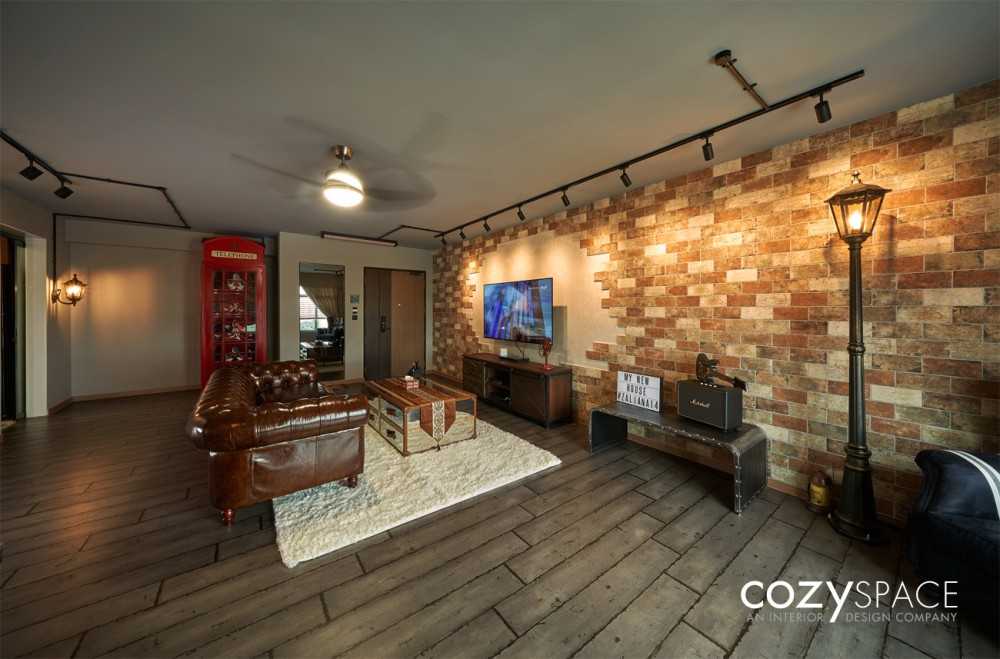

Bukit Batok West Avenue 6 ($85,000) by Cozyspace
For example, matte black steel accents or matte-finish paint on walls will complement the industrial aesthetic, while a shiny steel chandelier or polished concrete floors can add contrast and sophistication.
Limewash is another option that can work well within an industrial space. This natural, breathable paint creates a soft, matte finish with a slightly textured appearance, adding an earthy, weathered look to walls. It pairs nicely with raw materials like brick and concrete, enhancing the rustic, utilitarian vibe of industrial interiors. Its organic finish balances the hardness of steel and concrete while introducing warmth and character.
In the kitchen, matte black or brushed stainless steel appliances complement the industrial style beautifully. Pairing these with wood cabinetry or a concrete countertop will allow you to blend textures in a way that feels grounded yet modern.
Must-Have Features for Industrial Homes
Industrial-style homes are known for their unique blend of raw materials, open spaces, and a sense of authenticity.
To truly capture the essence of the industrial style, certain key features are essential. These elements not only define the look but also make the space both functional and visually striking. Here are some must-have features to consider when designing your industrial home:
Open Spaces and High Ceilings
One of the defining characteristics of industrial design is the use of open, airy spaces. High ceilings are a typical feature, allowing the room to feel expansive and unconfined. This openness highlights architectural elements like exposed beams, steel frames, and large windows.
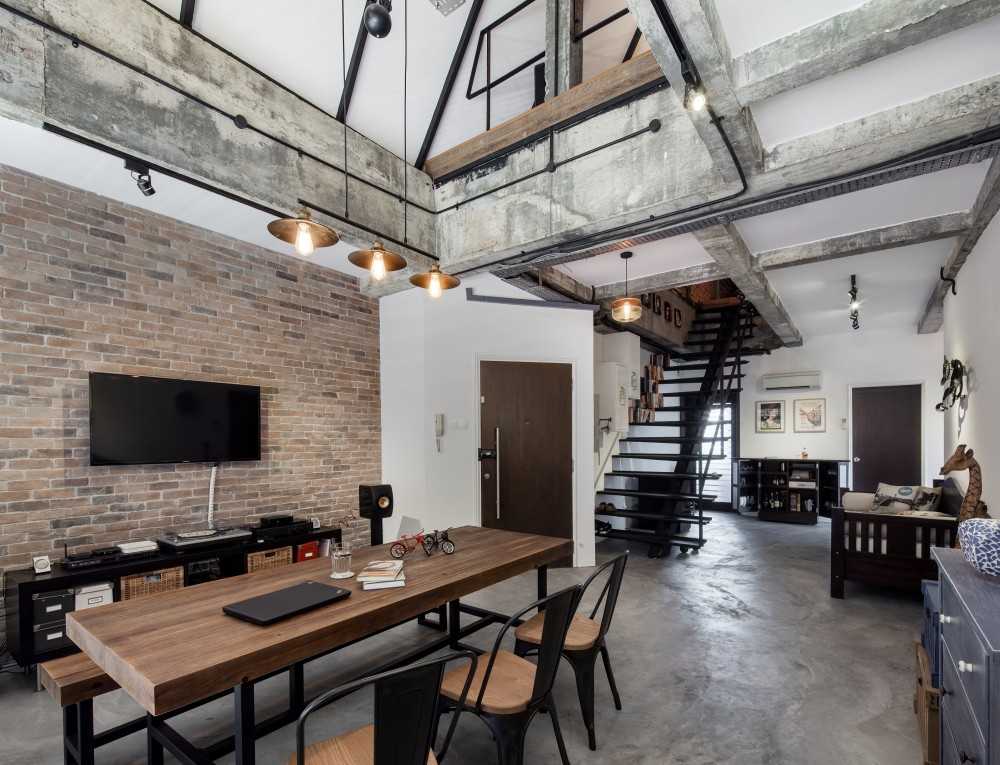

East Coast ($78,000) by De Style Interior Pte Ltd
In Singapore, where many homes are compact, achieving this look might mean adopting open-plan layouts that blend the kitchen, dining, and living areas together. Consider creating multifunctional spaces to maximize the use of your home’s floor plan while preserving a spacious, industrial feel.
If you want to make your ceilings feel higher, opt for lighter wall colors like white instead of darker tones, as light reflects better and can create the illusion of height. Avoid installing cove lighting or bulky light fixtures along the ceiling, as these can lower the perceived ceiling height and disrupt the airy, expansive feel of the space.
Exposed Structural Elements
Exposed structural elements like steel beams, concrete columns, and brick walls are the hallmark of industrial design. These features are typically left unfinished to showcase their raw beauty.
If you’re renovating a resale unit and in the process of tearing down walls, you might uncover original industrial elements like exposed steel beams or concrete columns. If these features emerge, you can choose to leave them as-is, adding to the raw, industrial aesthetic.
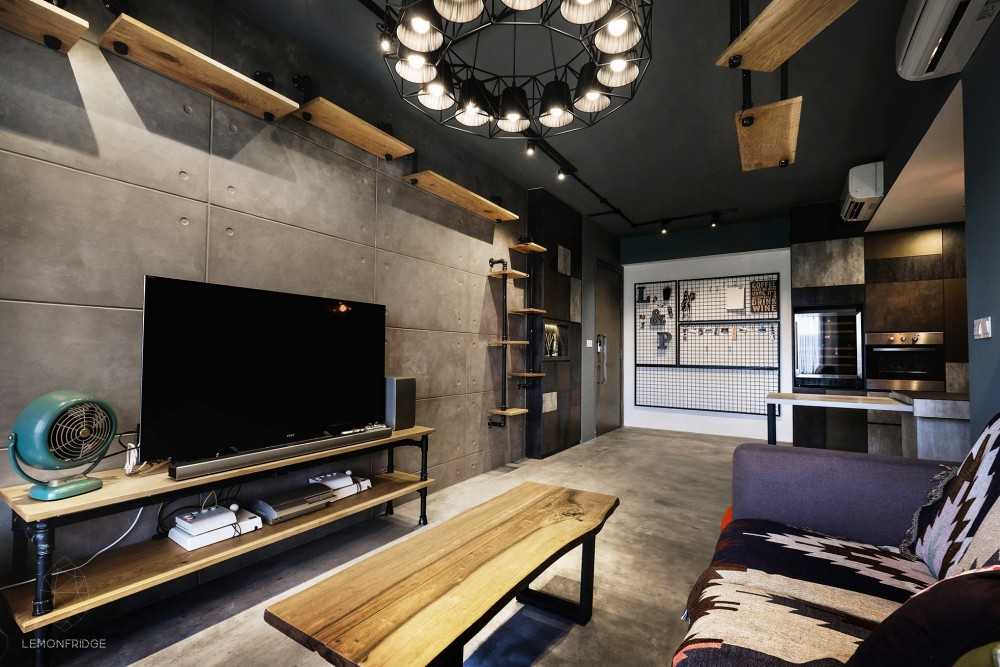

The Citylife ($90,000) by Lemonfridge Studio
However, if you’ve purchased a new unit, these elements are unlikely to be part of the structure. In that case, you can still achieve an industrial look by incorporating decorative elements, such as exposed steel beams or columns, as design features.
Large Windows with Minimal Frames
Industrial-style homes often feature large windows that allow natural light to flood the space, creating an open and airy atmosphere. These windows are typically framed with minimalistic steel or metal frames, allowing the view to become a focal point.
In Singapore, where natural light can be abundant, large windows or even glass doors can help bring the outdoors inside and enhance the industrial vibe. However, in many apartments, especially HDB flats, altering the windows or changing the façade of the building is not an option. HDB regulations ensure that the exterior of the building remains uniform, and similarly, condo residents are often restricted by MCST (Management Corporation Strata Title) rules that prevent changes to the building’s external appearance.
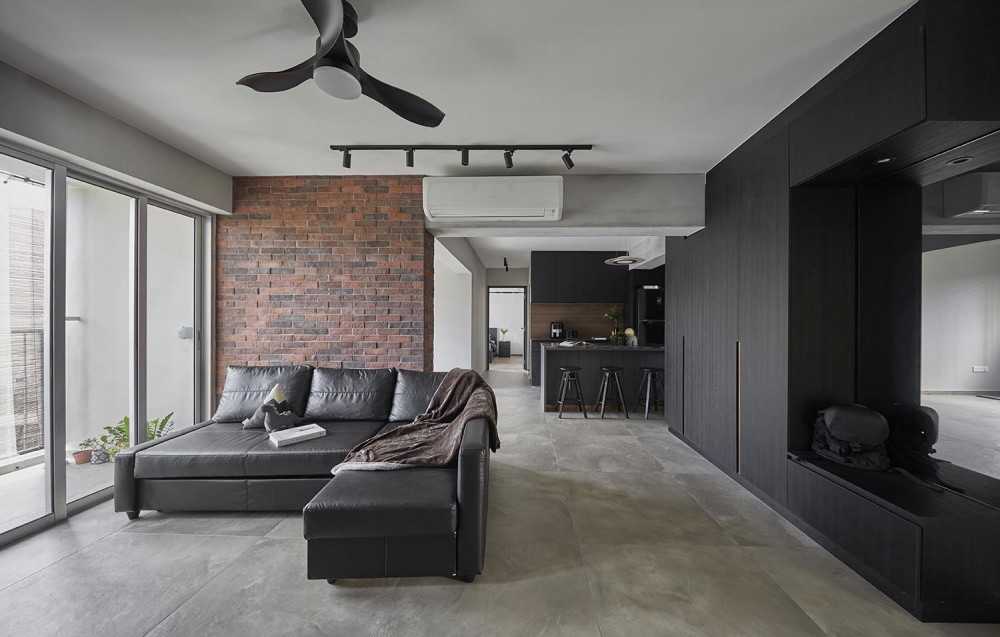

228A Ang Mo Kio ($88,000) by The Interior Lab Pte Ltd
If you’re unable to make changes to the windows themselves, there are still ways to achieve an industrial look. Consider using industrial-style window treatments, such as minimalist metal blinds, sheer curtains, or linen drapes, to soften the space while maintaining the open, airy feel. You can also play with lighting to accentuate natural light—think of strategically placed pendant lights or spotlights that complement the industrial design while enhancing the ambiance.
Statement Lighting
Lighting plays a crucial role in industrial design. Large, bold fixtures like pendant lights, chandeliers with exposed bulbs, or industrial-style sconces are must-haves in an industrial home. The use of Edison bulbs, for example, adds a nostalgic feel and reinforces the raw, unfinished aesthetic of the style.
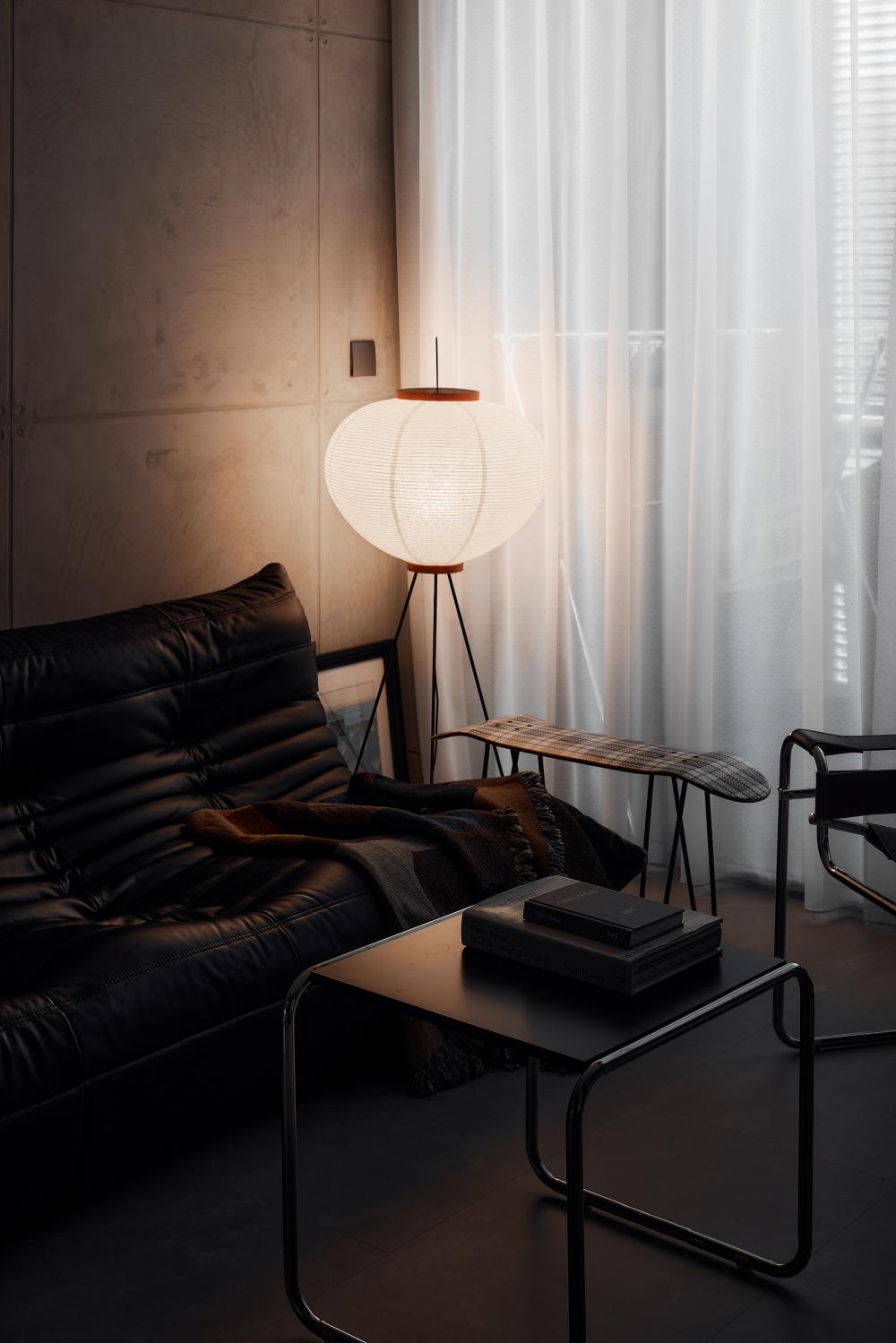

208 Jalan Eunos ($72,000) by Commute Design Studio
When designing your lighting, think about creating focal points in each room with large, eye-catching fixtures that double as pieces of art. Pendant lights above the kitchen island, for example, can create a dramatic look while providing ample task lighting for cooking and preparation.
Metal Accents and Hardware
In an industrial-style home, metal is a key material used in accents, furniture, and hardware. Brass, copper, and matte black steel are commonly used for fixtures like door handles, cabinet pulls, and lighting.
Additionally, metal legs on tables and chairs or even metal-framed furniture pieces are an easy way to incorporate the industrial style into your home. These touches add an industrial edge without overpowering the space.
Minimalist Furniture
Industrial style leans towards minimalist furniture, favoring function over form. Clean lines, simple shapes, and sturdy construction are hallmarks of industrial furniture.
Think about investing in pieces made from raw materials like steel, wood, and leather, which embody the utilitarian spirit of the style. A steel-framed sofa or a reclaimed wood coffee table can serve as the centerpiece of your living room, balancing the edginess of the space with comfort.
Open Shelving
Open shelving is another key feature of industrial interiors. Metal or reclaimed wood shelves can showcase books, plants, or decorative items without the clutter of closed cabinets. In kitchens, open shelves are often used to display dishes, glassware, or even ingredients, creating a visually striking yet functional display.
If you prefer a cleaner look, consider floating shelves that create the illusion of extra space while offering an industrial flair.
Color Palette and Decor
The color palette of an industrial-style home plays a crucial role in setting the tone for the entire space. Neutral tones dominate, with shades like grey, white, black, and beige forming the foundation. These colors reflect the raw, unfinished materials often associated with industrial design, such as concrete, metal, and stone.
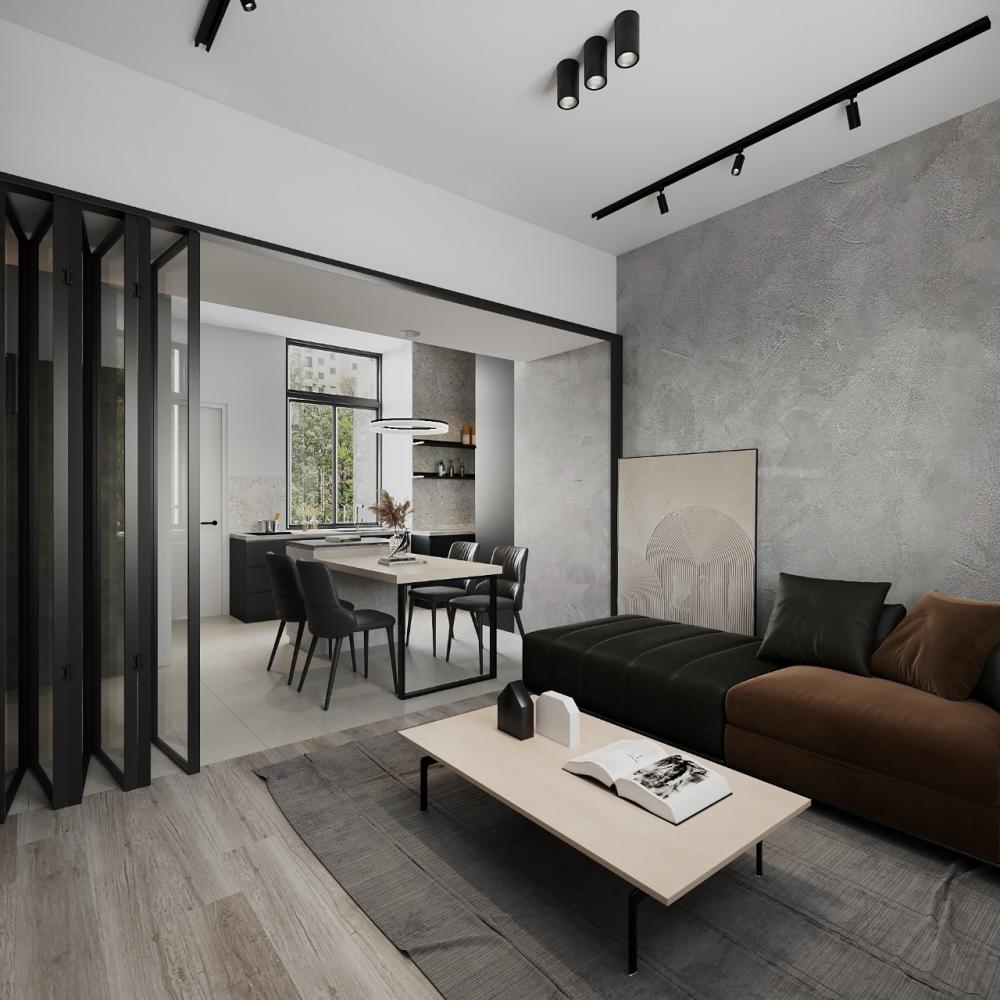

Moh Guan Terrace ($85,000) by Co1 Studio
To add depth and prevent the space from feeling too monotonous, incorporate accent colors sparingly. For example, shades like rust, deep navy, or olive green can evoke a sense of warmth while maintaining the style’s rugged edge. These accents can appear in furniture pieces, wall art, or even small accessories like cushions or throws.
Incorporating Textures and Layers
While the industrial style leans on minimalism, layering textures is essential to keep the space visually interesting. Combine smooth surfaces like polished concrete or steel with rougher, tactile materials like reclaimed wood or exposed brick. For a softer touch, integrate natural fabrics such as cotton or wool through rugs, curtains, and upholstery.
Leather is another excellent material for industrial spaces, particularly in furniture like sofas or armchairs. Choose darker leather tones like brown or black to match the palette and emphasize the industrial aesthetic. For a vegan or more sustainable option, opt for performance fabrics with a leather-like look.
Décor Choices
When it comes to décor, less is more. The industrial style thrives on simplicity, so avoid cluttering the space with too many decorative items. Choose statement pieces that reflect the industrial theme, such as oversized clocks, vintage light fixtures, or abstract metal sculptures.
Wall art can be another way to tie the design together. Black-and-white photography, architectural sketches, or abstract prints in muted tones align well with the industrial look. Consider using frames made of steel or wood to further emphasize the aesthetic.
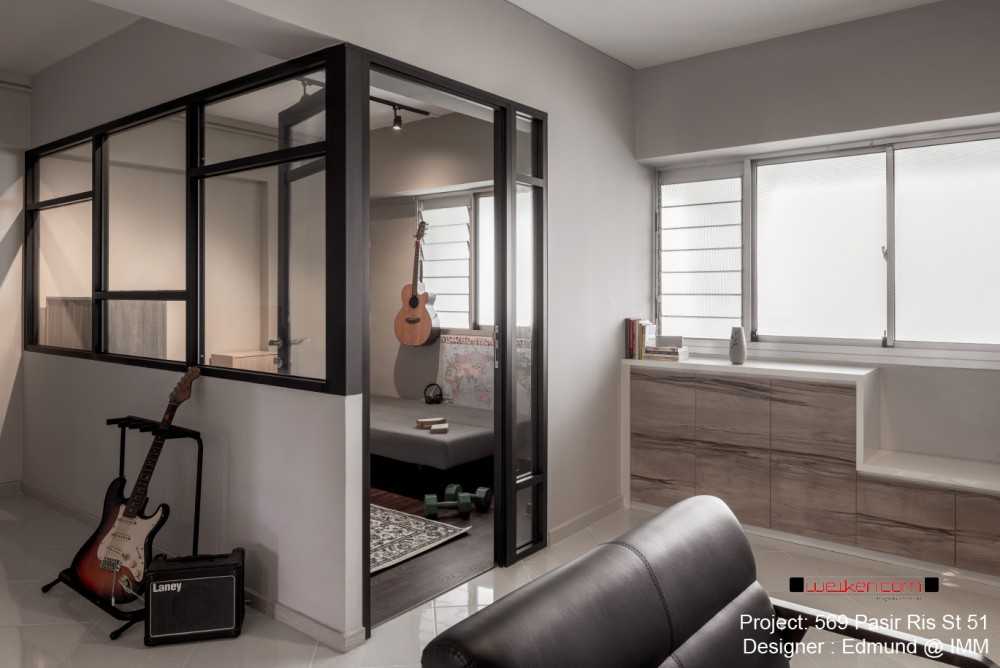

569 Pasir Ris St 51 ($92,000) by Weiken.com Design Pte Ltd
You can also make your functional items part of the décor. For example, hang up your guitar or bicycle on the wall to create a visually striking yet practical display. This not only saves space but also enhances the industrial aesthetic with personal, meaningful touches.
Greenery and Contrast
Though industrial interiors are known for their urban edge, incorporating greenery can create a striking contrast. Plants like succulents, snake plants, or monstera add a touch of nature that softens the harshness of metal and concrete. Use minimalist pots in materials like terracotta, cement, or matte ceramics to maintain cohesion with the theme.
Maintenance Tips for Industrial Homes
The industrial style is known for its rugged, raw appearance, but keeping it looking effortlessly stylish requires regular care.
Many of the materials and finishes commonly used in industrial homes, like concrete, metal, and wood, have unique maintenance needs to ensure their durability and appearance over time. Here’s how to keep your industrial-style home in top condition:
Concrete Surfaces
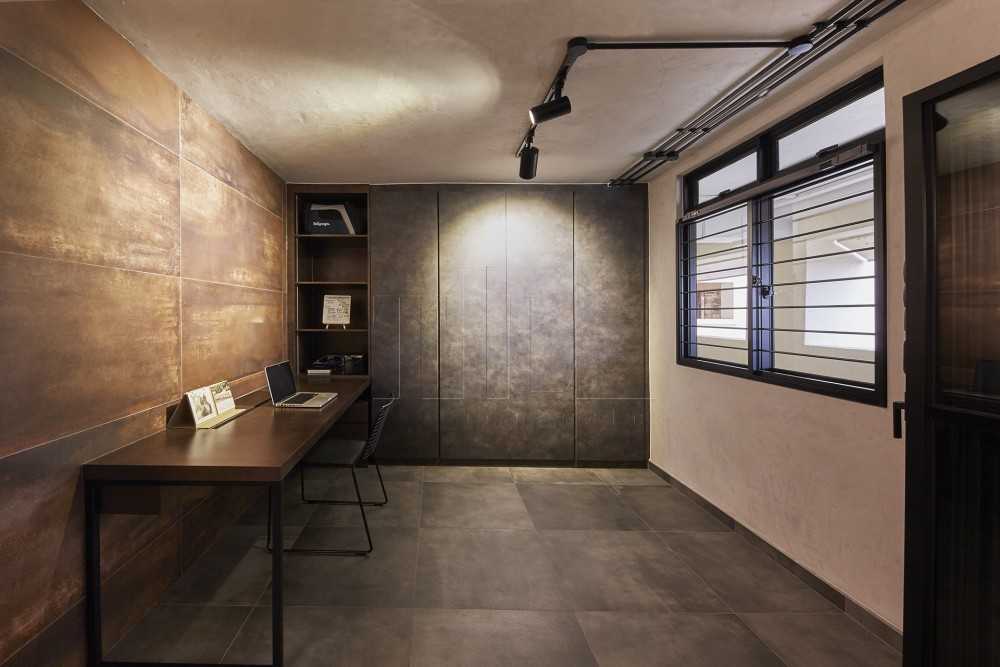

2 Holland Ave ($77,000) by The Interior Lab Pte Ltd
Concrete floors and countertops can be porous and prone to staining if not properly sealed. To take care of your concrete surfaces properly:
- Seal Regularly: Apply a concrete sealer every one to three years to prevent moisture absorption and staining.
- Clean with Care: Use a mild detergent and avoid harsh chemicals that can damage the sealant. Spills, especially of acidic substances like vinegar or wine, should be cleaned immediately to avoid etching.
- Protect High-Traffic Areas: Use rugs or mats in high-traffic areas to minimize wear and tear while adding warmth and texture to the space.
Exposed Metal Features
Exposed metal elements like beams, pipes, and furniture frames contribute to the industrial vibe but can be susceptible to rust and tarnishing. Here’s how to take care of these features:
- Prevent Rust: Regularly clean metal surfaces with a damp cloth and dry thoroughly to avoid moisture buildup.
- Treat Corrosion: For minor rust spots, use a rust remover or sandpaper, followed by a protective coating or wax to prevent further corrosion.
- Polish and Maintain: For metals like brass or copper, periodic polishing can restore their shine. Matte finishes, on the other hand, require gentle cleaning to avoid creating unwanted gloss.
Wood Surfaces
Reclaimed or natural wood is a key element in industrial homes, adding warmth to the otherwise stark aesthetic. However, wood needs proper care to maintain its integrity in Singapore’s humid climate:
- Prevent Moisture Damage: Use dehumidifiers or air-conditioning to reduce humidity levels and prevent warping or mold growth.
- Clean with the Right Products: Avoid harsh chemicals; instead, use a damp cloth or wood-specific cleaners. For reclaimed wood, check if it’s treated, as untreated wood may need additional protection like varnishing.
- Refinish When Needed: Over time, wood surfaces may lose their luster. Sanding and refinishing can refresh the look while maintaining the industrial charm.
A Final Word on Renovating In the Industrial Style
Renovating in the industrial style allows you to embrace the raw beauty of materials while creating a space that’s uniquely your own. Whether you’re transforming an HDB flat or a condo, the industrial aesthetic can elevate your home into an urban sanctuary.
Ready to start your renovation? Take inspiration from this guide, plan meticulously, and enjoy bringing your dream industrial-style home to life!
Want to check out home renovation projects for more inspiration? Browse interior design ideas on Hometrust, or click the button below to get connected with expert designers!
Renovating soon? Let Hometrust recommend the best interior designers.
If you are reading this, you are probably wondering how you can create your dream home.
Here’s the thing, everyone’s needs and requirements for their home renovation is different. A designer that may work for someone else, may not quite work for you.
At Hometrust, we’re here to help match top rated designers, recommended by past homeowners to you through our data-driven and matching algorithm.
Whether you are looking for partial renovation or a full fledge overhaul, we’ll be able to recommend you top designers to match your renovation requirements and lifestyle.
Recommendations and free and you can simply start by helping us understand your needs below!
Get RecommendationsRenovate safe!
The Hometrust Team


